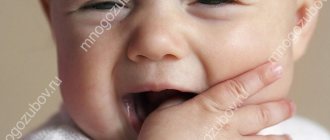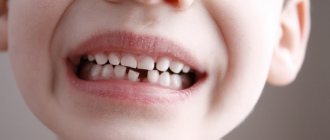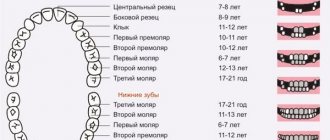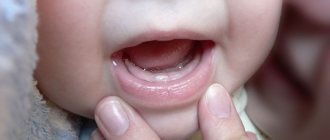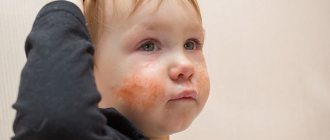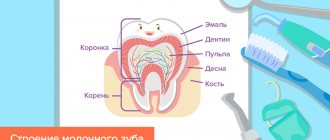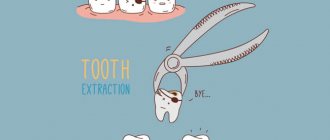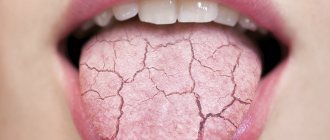Find out when your child's first teeth should grow. And why sometimes children have no teeth a year.
All mothers are excitedly waiting for the baby to finally have his first teeth. In addition, there are plenty of reasons to worry, because the process of teething often occurs with discomfort. The baby experiences increased salivation, worsening mood, fever, diarrhea, and discomfort.
But what follows is not about the symptoms, but about why children develop teeth later than the rest of their peers. We will also find out when children's primary and permanent teeth should appear.
When does a child cut his first tooth?
According to pediatricians, the timing of teething is individual for each baby. In some children they appear at 2-3 months, while in others at 9 months or a year. Oddly enough, this phenomenon is considered the norm. The main thing is that by the time your daughter or son reaches the age of three, she already has 20 baby teeth in her mouth.
Every mother should prepare both mentally and physically for such a responsible task.
- You will have to be patient with your child's whims. Surround your child with affection, care, love.
- Do daily cleaning, keep toys clean, and also maintain your and your child’s hygiene. After all, babies during such a period often put everything in their mouths; your task is to prevent the child from catching an intestinal infection.
- To make teething easier, you can buy special teethers (gum massagers). They have an anti-pain effect.
- Special gels are good for gum pain relief. Just don’t think that they help teething. They only relieve inflammation, relieve some pain and soothe irritated gums.
- If a child's temperature rises above 38, then visit a pediatrician. The cause of elevated temperature can be not only teething, but also various diseases.
IMPORTANT: Before using gels to soothe gums during tooth growth, consult with your pediatrician which drug is best to use.
Why a one-year-old child has no teeth: reasons
Vitamin D and calcium have virtually no effect on the timing of the appearance of the first teeth. These factors have a greater impact on the quality of teeth and enamel. The reasons why a baby has no teeth at one year can be:
- genetic factors, if the parents had late teeth, then their baby is also likely to have the same problem
- oddly enough, even climatic conditions can influence this process; in a warm climate zone, children’s teeth grow better
- a lot depends on the quality of water, nutrition
- Severe infectious diseases negatively affect the rate of tooth growth
- lack of vitamins and calcium can slow down this effect
If at the age of one and a half years the baby does not have a single tooth, then he needs to undergo a comprehensive examination. Sometimes teeth do not grow due to pathology - adentia .
The main reasons for missing teeth
There are various physiological and pathological mechanisms that prevent the timely appearance of teeth. The main reasons for this situation are discussed below.
- Deviation in physical development. This is the most favorable option - teeth will appear soon, only the process is slightly delayed. This is a fairly common case in premature babies.
- Lack of calcium and vitamins in the baby’s body. Improperly introduced complementary foods or the use of non-adaptive mixtures leads to a deficiency of microelements. All organs and systems of the child’s body, including teeth, suffer from this. When normal nutrition is restored, teething will occur, but with a delay, sometimes significant.
- Edentia. This is a hereditary pathological condition characterized by the absence of tooth germs. In this case, chewing function can be restored artificially using implants.
- Mechanical damage to the gums. Sometimes parents make a serious mistake when trying to speed up teething on their own. They deliberately injure the gums, which leads to scars. This not only does not help, but on the contrary, it sharply slows down the process of teeth appearing.
A dentist will help determine the specific cause. Therefore, if there is a delay in the eruption of the first teeth, you cannot postpone a visit to the doctor.
What to do if a child does not have a single tooth in one year?
Previously, it was considered a deviation from the norm if a baby does not have a single tooth per year. Doctors first of all suspected that the baby had anemia or rickets. This version has now been refuted. Studies have shown that many children start teething at 1-1.2 years of age. However, parents should not be careless and just wait for the process to manifest itself. When your child turns 1 year old, be sure to tell your pediatrician about the problem that has arisen.
He, in turn, should establish the reason for the delay in tooth growth. If it is heredity, he will tell you when to come back for an appointment. He will prescribe the use of vitamins necessary for teeth growth and advise on how to feed the baby correctly. If not, he will send you for tests or to a dentist. You may be asked to do:
- biochemical tests of urine, blood
- ultrasound examination of organs
- check your thyroid gland
IMPORTANT: To exclude a disease such as adentia, the dentist will order an x-ray of the lower jaw. If the diagnosis is confirmed (there are no teeth rudiments), then after a while dentures are installed. However, do not get upset right away - this pathology is extremely rare.
Consequences of early destruction of primary teeth
After the early removal of a baby tooth, the gum in its place becomes overgrown, and the permanent one is deprived of its natural landmark. This leads to phenomena such as:
- dystopia - eruption of a permanent tooth outside the dental arch;
- retention - the occurrence of a formed tooth in the thickness of the jaw bone.
If the baby tooth does not receive treatment, and the inflammatory process spreads to its roots, then the permanent follicle located under them is damaged. In this case, the permanent one may die, and then its place in the dentition will remain empty. The absence of a tooth is confirmed by radiography.
How many baby teeth should a child have?
Above we looked at when the first teeth can erupt. Based on this, it is clear that all monthly data on dental growth are approximate. After all, some children don’t get their first tooth until they are one year old, or even later.
According to the rules, the first incisors can appear at 6-8 months. And by the age of two and a half, the baby should have grown 20 baby teeth. The remaining indigenous 10-12 grow up to 32 years. The latest ones are wisdom teeth, they are the ones that cause us a lot of trouble with their appearance.
IMPORTANT: For some people, the norm is 28-30 teeth, the remaining 4 never appear.
How much does treatment cost?
Treatment of adentia in children begins with an initial examination and drawing up a treatment plan. Typically, these services are provided free of charge - as a promotion to attract customers. Also, a small patient will need to have an x-ray at a cost of 350 rubles and a panoramic photograph of the oral cavity, the cost of which starts at 1,000 rubles. In addition, before starting treatment of adentia in children, it is necessary to carry out professional oral hygiene at a price of 2,700 rubles and more. Based on the fact that edentia in children is treated primarily by installing removable dentures, parents should be prepared for the following costs for various types of orthopedic structures: a partially removable laminar denture costs from 1,750 to 60,000 rubles, a complete removable laminar denture costs from 40,000 to 100,000 rubles, temporary complete removable denture - from 2,800 to 3,500 rubles. A removable acrylic prosthesis will cost from 12,000 rubles, a bridge prosthesis - from 25,000 rubles. The cost usually includes the manufacture of the structure and its installation by a specialist.
How many teeth should a child have at 6-7 months?
During this period, the child sometimes develops lower and upper central incisors - 2-4 teeth. Signs of the appearance of incisors, however, like other baby teeth, can be:
- cough, runny nose
- elevated temperature
- swelling of the gums
- diarrhea, vomiting, constipation
- drowsiness, tearfulness
- diathesis
However, all these symptoms disappear after 2-7 days, when the gum inflammation subsides.
How many teeth should a child have at 10-11 months?
Your baby has already grown up, at 10-11 months, he knows his loved ones very well and begins to be shy about strangers. He crawls with more confidence now. Begins to overcome various obstacles. He likes to study, explore the new world, climb on and off the soft sofa on his own. In addition, he gains 2 more upper lateral incisors, so in total the baby already has 6, and sometimes 8 teeth. You need to take proper care of them.
- Do not accustom your child to sweets; give such treats to your baby in moderation to avoid tooth decay.
- Give water after meals.
- Try not to put your baby's spoon in your mouth to avoid transferring harmful bacteria.
- Keep the pacifier clean.
IMPORTANT: If your child’s teeth grow in the wrong order, they are of an unusual color, or there is an unpleasant odor from the oral cavity, then contact your pediatric dentist.
Problems when changing bites
Sometimes a situation arises that a child “grows a tooth under a tooth” - the permanent one has already appeared above the gum, and the temporary one is firmly held in its place. This happens when the resorption process of one or more milky roots is disrupted. This is also a reason to go to the dentist - after all, no one can say how many days later a loose baby tooth will fall out, and its “stubbornness” leads to the dystopia of a permanent one.
Dental doctors remove even such semi-loose teeth with anesthesia, so as not to cause discomfort to children. Only a specialist can decide what to do when changing the bite. Regular monitoring by the dentist during such an important period will help to avoid the formation of an abnormal relationship of the dentition, which will require further treatment by an orthodontist.
If a child’s baby tooth is loose, then you shouldn’t guess how long it will take for it to fall out; it’s better to consult a doctor without delay for qualified advice.
At the Shifa clinic, children are treated with modern equipment using the latest materials. The center has all the conditions for an accurate diagnosis of the condition of primary and permanent dentition, and this is the key to correct medical tactics. The dentists of the Shifa clinic find an approach to every child and master the most advanced methods of assistance, constantly improving their professionalism in Russia and abroad. Contact the best doctors who will help solve any dental problem!
How many teeth should a child have per year?
According to the formula for calculating the number of teeth, at 12-13 months the baby should already have 8 teeth. 4 on top, 4 on bottom. The formula looks like this:
Ν = Κ - 4, where Ν is the number of teeth; Κ is the baby’s age in months, and 4 is a constant value .
IMPORTANT: This is the year you will need to go to the dentist with your daughter or son for the first time, even if the child has no reason to worry about the health of the mouth and teeth.
Pathological causes of delay
If a child’s teeth have fallen out and new molars do not grow for a long time, the reasons for the delay should be sought in pathologies:
- Retention is a complete or partial delay in eruption. Partial retention is observed when the crown of a molar tooth appears in the socket of a milk tooth, but growth stops there. Often the cause is early loss of a baby tooth, accidental or surgical. That is, a replacement for him has not yet been formed.
- Adentia – absence of teeth. This rare problem is common in older people, but can also occur in children. As a rule, it is triggered by taking strong medications during pregnancy.
How many teeth should a child have at 1.5 - 2 years old?
Having reached 1.5 years of age, a child may have only 4 teeth, although according to the above formula he should have 13-14 teeth. It’s okay - this is considered the norm; in such cases, dentists advise giving the baby hard cheese to chew to stimulate their growth.
Already at this age, your baby should be taught to take care of the oral cavity. Use your example to show how you brush your teeth. Give your child a toothbrush and let him repeat the movements after you, only without the toothpaste.
How many teeth should a child have at 2.5 years old?
At 2.5 years old it is considered normal if your child already has 20 teeth. Moreover, these baby teeth last up to 5-6 years. There are various atypical situations; if they arise, you need to visit an orthodontist or dentist.
- Very early appearance of teeth sometimes indicates the presence of pathologies in the endocrine system.
- Late growth of teeth is caused by genetic factors, diseases of infectious origin, the presence of rickets, and disruption of the gastrointestinal tract.
- Incorrect position of the incisor, unusual, damaged appearance of the tooth indicates violations of the bone component, incorrect location of the axis of the incisor.
Diagram of teeth in a 3 year old child
Let us now summarize when and in what order the upper and lower primary teeth appear.
- The lower two central incisors appear at 6-10 months of age
- The upper two incisors usually grow in 8-12 months
- The upper two lateral incisors will appear at 9-13 months
- The two lateral incisors from below grow in 10-16 months
- The two upper molars will grow in at 13-19 months
- Two lower molars will appear at 14-18 months
- The upper canines usually grow in between 16 and 22 months.
- The lower two canines will erupt in 17-23 months
- The lower two second molars grow in at 23-31 months
- The upper two second molars grow at 25-33 months
Thus, by the age of three, the baby should already have 20 milk teeth.
How many teeth should a child have at 4 years old?
In children of 4 years of age, the number of teeth remains the same as at 3 years of age, that is, 20 milk teeth. Interdental spaces may already appear. Parents should wean their children from bad habits that can cause the growth of crooked permanent teeth.
At this age, you should give up the pacifier, do not allow the child to suck fingers, etc. If any problems arise, take your child to the dentist.
Types of edentia in children
Edentia in children is divided into types in accordance with the criteria indicated in the table below.
| Criterion | Type of edentia | Characteristic |
Time of occurrence | Primary (congenital) | Absence of baby teeth in young children and permanent teeth in older children |
| Secondary (acquired) | Lost tooth after eruption | |
Number of missing teeth | Partial | Some teeth are missing |
| Full | All teeth are missing | |
Age period | Edentia of temporary occlusion | Appears during the eruption of baby teeth |
| Edentia of permanent dentition | Appears during the period when baby teeth are replaced by permanent teeth. | |
Reason for missing tooth | True edentia | There is not even a tooth germ in the jaw |
| False edentia (retention) | Delayed tooth development. There is free space where the tooth should be, and subsequently it erupts |
How many teeth should a child have at 6-8 years old?
Already at the age of 6 years, future schoolchildren begin to lose milk teeth and grow permanent ones instead. This process lasts several years, gradually. First, the lower front incisors change, the permanent ones appear instead, then the upper ones. It is during these two years that the 4 front incisors will change.
IMPORTANT: Teeth need care, to avoid the well-known caries, buy your child toothpaste with fluoride, let him brush his teeth 2 times a day.
Treatment of adentia in children
Diagnosis of dental adentia in children is carried out by visual and palpation examination, targeted intraoral radiography and orthopantomography. The treatment tactics for adentia in children are determined taking into account the physiological, anatomical and hygienic characteristics of the child’s dental system. Depending on the degree of the disease, the following methods of treating adentia in children are used.
- Stimulation of teething.
In some cases, a procedure is used to dissect the gums and install special braces that stimulate teething.
- Fixed prosthetics.
The child is fitted with permanent orthopedic structures (crowns, bridges).
- Removable prosthetics.
Removable orthopedic structures (clasp, plate dentures) are installed.
- Dental implantation.
It is used only after the jaw bones are completely formed. This process is usually completed at the age of 18 for boys and at 16-17 years for girls. Until this time, edentulous treatment is carried out using removable and fixed dentures.
How many teeth should a child have at 14 years old?
- Teenagers of this age have already lost their baby teeth, but their permanent teeth are about to grow in. In total, there should be 28 of them available.
- Sometimes the growth process drags on for up to 15 years. But wisdom teeth never grow back. At the age of 14, unfortunately, 28% of adolescents have dental anomalies.
- Either they grow crookedly and sideways, or they protrude from the general row of teeth. You cannot cope with such problems on your own. Please note that already at this age the correct taste is formed.
- To solve the problem, visit an orthodontist. The sooner you go to him, the easier it will be to resolve this unpleasant situation.
Description and symptoms of the problem
The germ of a retention tooth is located in the bone, but its further growth does not occur for a number of specific reasons. This phenomenon is considered anomalous if the element has not erupted within two years from the due date.
In the partial form of the pathology, part of the crown is located above the gum or its outline is visible through the gum tissue. With complete retention, both the crown and root remain completely hidden. Typically, this problem affects the incisors, canines and the outermost “eights”. To clarify the position and shape, an x-ray examination is often required.
Typically, patients note an increase in body temperature and general malaise during teething, swelling and a change in the shade of the mucous membrane. In addition, if the element is fully formed in the bone tissue, but does not appear on the surface, pronounced pain may occur (most often it is monotonous). This indicates that the tooth is pressing on the roots of its neighbors. In some situations, facial numbness is also noted, which is caused by pressure on the nerve endings. It is also worth noting that in some cases the pathology does not provoke the appearance of any obvious symptoms.
How to eliminate teething problems?
To ensure that your baby does not have any disorders, it is important to think about the future newborn even when planning a pregnancy. Therefore, prepare for this systematically.
- Treat your teeth in advance, eat right, take vitamins, and do not limit yourself in consuming foods rich in calcium.
- Get outside more often, make sure you have normal hemoglobin.
- Do not drink strong drinks or smoke under any circumstances.
- Do not self-medicate, do not take medications that your doctor has not prescribed to you.
After childbirth:
- Make sure your baby gets adequate nutrition
- strengthen your baby, take daily walks
- Contact your pediatrician promptly if you notice any changes in your child’s health.
- take care of your child's hygiene
IMPORTANT: Monitor your baby’s immune system as a whole. Diseases may cause teething problems.
